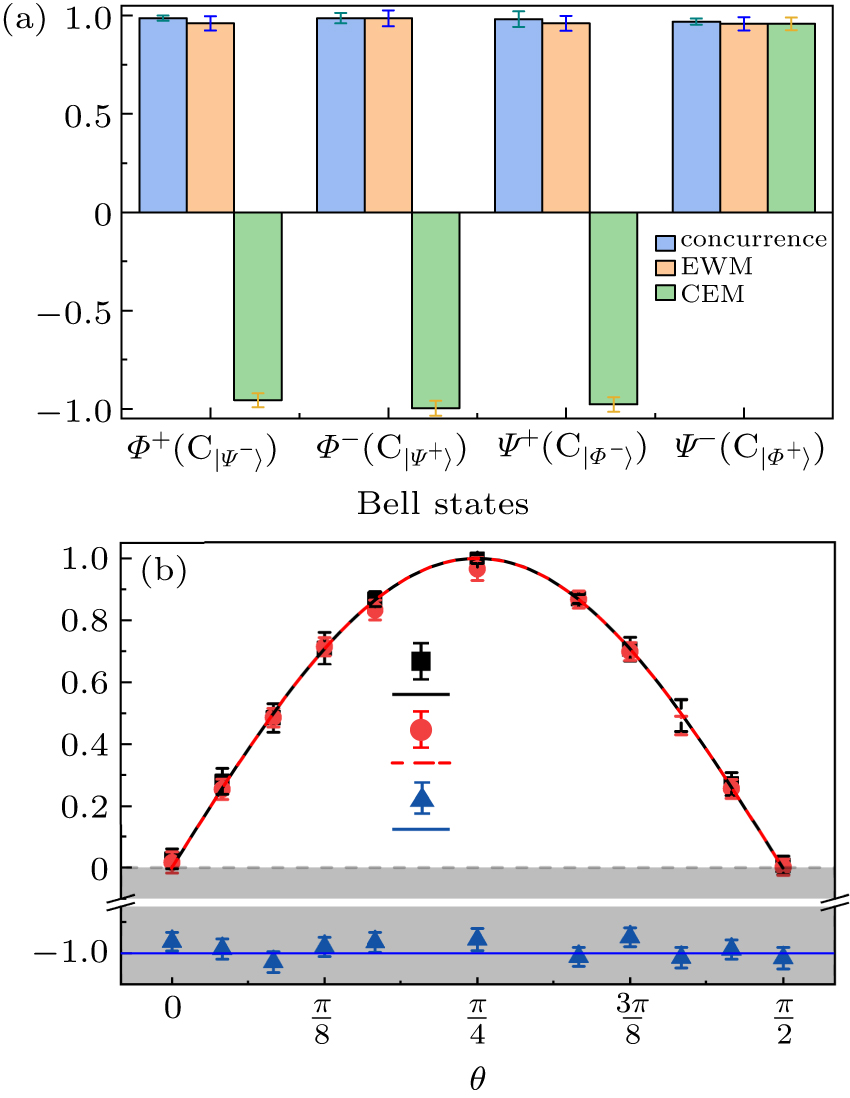|
Ke Zhi-Jin1, 2, Wang Yi-Tao1, 2, Yu Shang1, 2, Liu Wei1, 2, Meng Yu1, 2, Li Zhi-Peng1, 2, Wang Hang1, 2, Li Qiang1, 2, Xu Jin-Shi1, 2, Xiao Ya3, Tang Jian-Shun1, 2, †, Li Chuan-Feng1, 2, ‡, Guo Guang-Can1, 2
|
Comparison between the MDI-UEW and CEW on entanglement detection ability and comparison between the EWM and concurrence on entanglement quantification ability. CEW is calculated by
Tr(W^0ρ^)
. EWM represents
E(ρ^)
, which is the witness outcome of MDI-UEW. (a) Experimental results for the Bell states. The related collections of Bell states are labelled in the parentheses. The orange bars represent the experimental results of the EWM, the green bars represent the CEW, and the blue bars represent the estimated concurrence. (b) Experimental results of cos θ|HH〉 + sin θ|VV〉 (θ ∈ [0,π/2]). The theoretical values of the EWM (EWMth, red dashed line) and concurrence (Con.th, black solid line) are both sin 2θ, while the theoretical value of CEW (blue solid line) is –1. Red circular points represent the experimental results of EWM (EWMexp), whereas the black square points represent the estimated concurrence (Con.exp). Blue triangle points represent the results of CEW without any ability for entanglement detection or quantification for the target states. |
